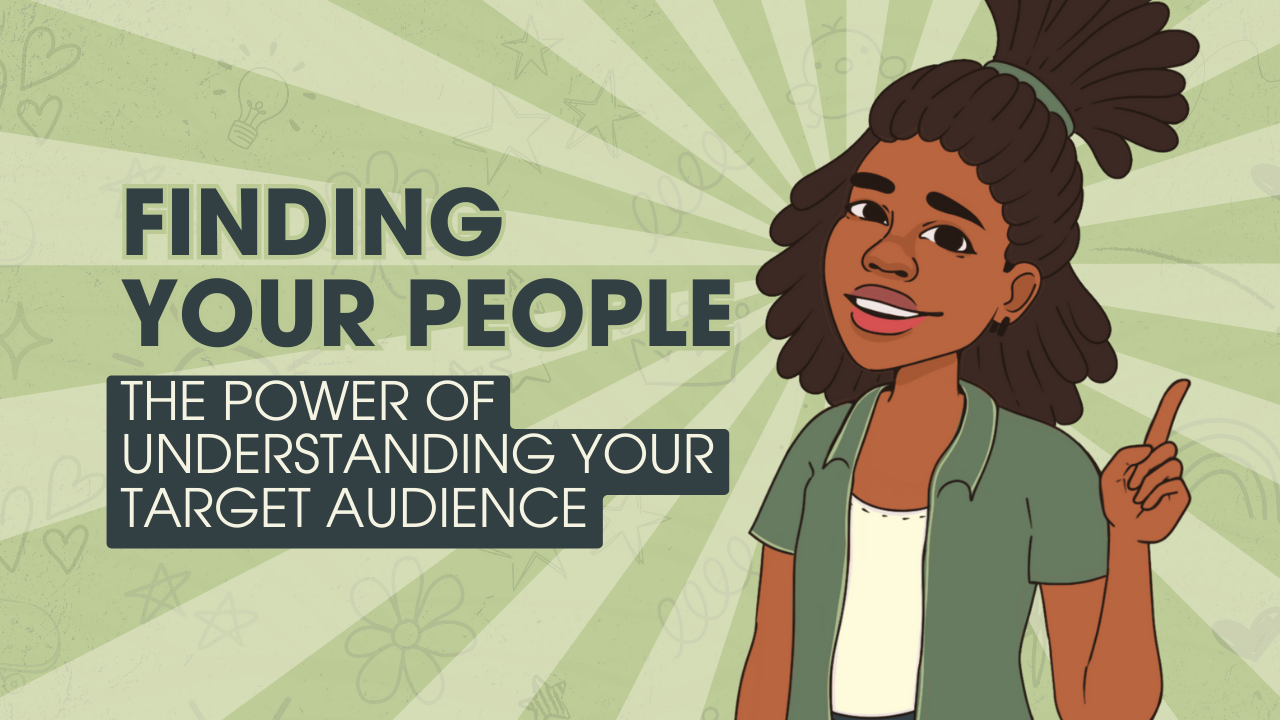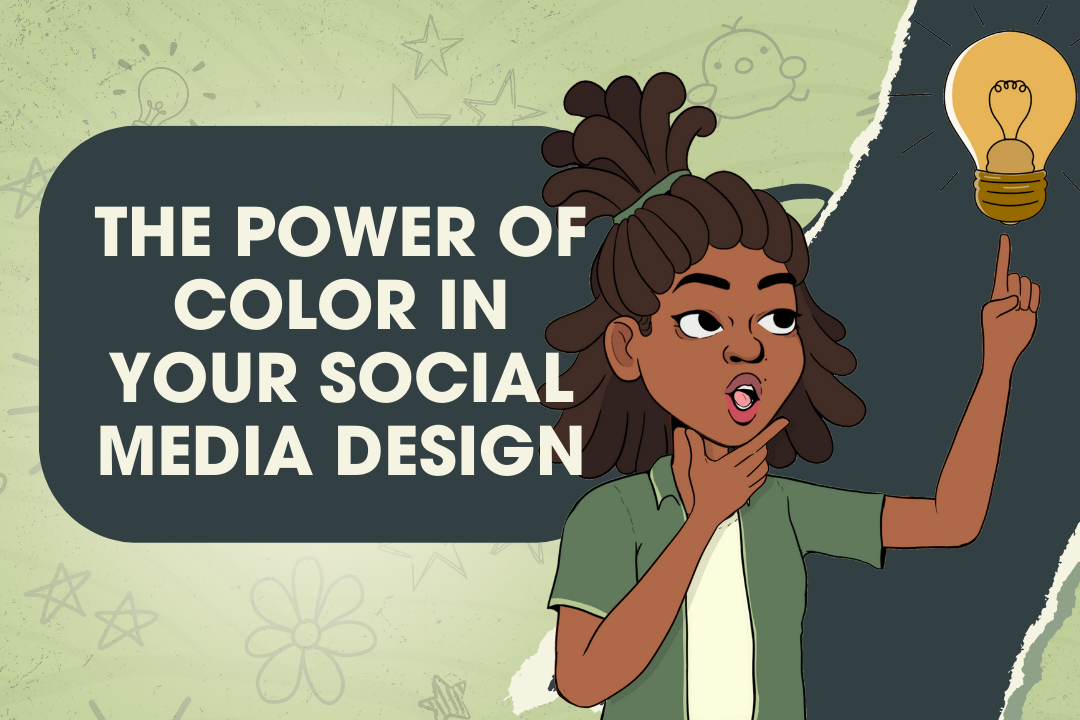Color Psychology 101: The Impact of Color on Effective Marketing
If you're a business owner or creative professional, knowing how color affects your audience is essential. Color isn't just about looks; it plays a key role in setting the mood, triggering emotions, and even leading to actions.
Colors influence our minds in different ways. This is especially important in social media, where you only have a few seconds to grab someone's attention. Your choice of colors in images and text can make your post stand out or get lost in a sea of information. Color shapes how your message is received and connects with your audience.
In this post, we’ll explore color psychology and its importance in making your social media posts stand out.
Understanding Color Psychology
Color psychology studies the way colors impact our choices and actions. No matter what your background, all entrepreneurs, business owners, and brand builders need to know how color impacts their target audience (or have someone by their side who does). Each color can trigger different feelings and ideas.
Knowing how different colors make people feel helps you send the right message, attract the audience you want, and influence what they do. On social media, using colors wisely can make your content more effective, shape how people see your brand, and increase engagement.
Choosing the Right Color Palette
Your choice of colors is a key part of your brand's identity on social media. It should not only look good but also connect with your audience and reflect what your brand stands for. Here’s how different colors can be used:
Red: Bold and eye-catching, red symbolizes excitement and urgency. It's great for grabbing attention and encouraging quick responses, like in sales or sign-ups. Read more about the color red here.
Orange: Vibrant and energetic, orange represents enthusiasm and creativity. It's effective for brands that want to appear friendly and inviting, often used in the food industry or creative businesses.
Yellow: Bright and cheerful, yellow stands for happiness and optimism. It's perfect for products for kids, creative fields, or brands that want to feel young and positive.
Green: Green symbolizes nature, peace, and health. It suits brands that are eco-friendly or focused on wellness and organic products.
Blue: Blue represents trust, calm, and loyalty. It's a good choice for businesses focused on trust, like finance or healthcare.
Purple: Mixing the calm of blue and the energy of red, purple represents luxury, mystery, and creativity. It's great for beauty or luxury brands.
Pink: Soft and romantic, pink symbolizes love and kindness. It's a popular choice for brands targeting a younger or predominantly female audience, often used in beauty, fashion, or childcare products.
Beige: Neutral and calming, beige conveys simplicity and elegance. Ideal for brands that want a minimalist, sophisticated look, often seen in luxury goods or interior design.
Brown: Earthy and reliable, brown represents stability and strength. It's a good choice for brands that emphasize naturalness, like organic products or outdoor gear.
Black: Black conveys elegance, sophistication, and power. It’s ideal for fashion, luxury, or tech brands that want a modern, cutting-edge feel.
Grey: Versatile and balanced, grey symbolizes neutrality and sophistication. It's a popular choice for professional, tech, or luxury brands, offering a modern, sleek look.
White: White is all about simplicity, cleanliness, and minimalism. It’s used by modern, high-tech, or minimalist brands that value simplicity and a futuristic look.
Silver: Modern and sleek, silver suggests innovation and high-tech. It's a great choice for tech companies or brands that want to convey a futuristic, sophisticated image.
Gold: Luxurious and prestigious, gold represents wealth and success. Often used by high-end brands to convey opulence and quality.
Choose colors that match the message you want to convey. Using color psychology, you can select a palette that strengthens your brand's voice and boosts your social media presence.
Guide to Using Color Psychology in Social Media Branding
Understanding how colors affect people's thoughts and actions is just the start. The real skill is in using this knowledge effectively in your social media posts. Here are some simple tips:
Consistent Use of Colors: Use the same colors across your social media to create a strong, recognizable brand. This helps people associate specific colors with your brand, building trust and recognition.
Use Contrast: Use contrasting colors to make your content stand out. This works well for highlighting important text or calls-to-action. Just be careful not to use colors that are too harsh and strain the eyes.
Evoke Emotions: Choose colors that create the desired emotional response. Whether you want to convey urgency, trust, excitement, or calmness, select colors that align with these goals.
Test and Adapt: Experiment with different color schemes on social media and see how your audience reacts through likes, comments, and shares. Analytics can provide insights into what works best for your audience.
Consider Cultural Differences: Be mindful of how colors are perceived differently in various cultures. Adjust your color choices if your audience is global.
Accessibility is Important: Ensure that your color choices are accessible to everyone, including those with color vision deficiencies. Good contrast and readability are essential for inclusive design.
Stay Updated with Trends: Keep up with color trends. Sometimes using trendy colors can make your content more relevant and appealing to modern audiences.
Seek Expert Advice: If you're unsure, consult a branding expert (you can book a coaching call by clicking here) for valuable insights to help refine your color strategy to align with your brand's goals and audience preferences.
Wrapping Up
Using color psychology can really improve your social media impact. Choosing the right colors can help you connect better with your audience and make your posts more effective. But remember, colors work differently for every brand. Don't hesitate to experiment and find what fits your brand the best, and if you need any help along the way, please don’t hesitate to fill out the contact form to reach out. At Constant Creates, we’re proud to be your creative partner in bringing your brand’s visions to life.
Frequently Asked Questions
-
Color psychology is the study of how colors affect perceptions and behaviors. It looks at how different colors influence our moods, feelings, and actions, especially in marketing, branding, and design contexts.
-
Colors can bring out specific emotions and feelings that influence consumers' attitudes toward products and their purchasing decisions. For example, red can create a sense of urgency, while blue can build trust.
-
Absolutely. Colors have the power to impact our mood. For instance, warm colors like red and orange can evoke feelings of warmth and comfort, whereas cool colors like blue and green can be calming and relaxing.
-
In marketing, understanding color psychology helps in creating brand identities that resonate with the target audience, designing effective advertising, and influencing consumer behavior to drive sales and brand loyalty.
-
Not entirely. While some color associations are common, cultural differences can lead to varying interpretations of colors. For instance, white is associated with purity in many Western cultures, but it's often linked to mourning in some Eastern cultures.
-
With a brand designer by their side, brands often choose colors based on the emotions they want to bring out in their customers. They consider their brand personality, target audience, and the cultural context of their market to select colors that align with their brand identity.
-
The best color for a call-to-action button is one that stands out on the page but also aligns with the overall design and brand colors. Often, contrasting colors like red or orange are effective as they grab attention, but if your brand colors are a soothing neutral color palette, avoid using bright red CTA buttons since this is jarring and distracting.
-
Yes, the color scheme of a website can significantly impact conversion rates. The right choice of colors can make the site more appealing, highlight key elements, and guide user actions, like clicking a purchase button.
-
Yes, color psychology is crucial in logo design. The colors used in a logo help in conveying the brand's message and values, and in making the logo memorable and recognizable to the audience.
-
Research suggests some gender-specific preferences, like blue being favored by both genders, while colors like purple are generally preferred more by women. However, these preferences can vary and are influenced by cultural and social factors.

































